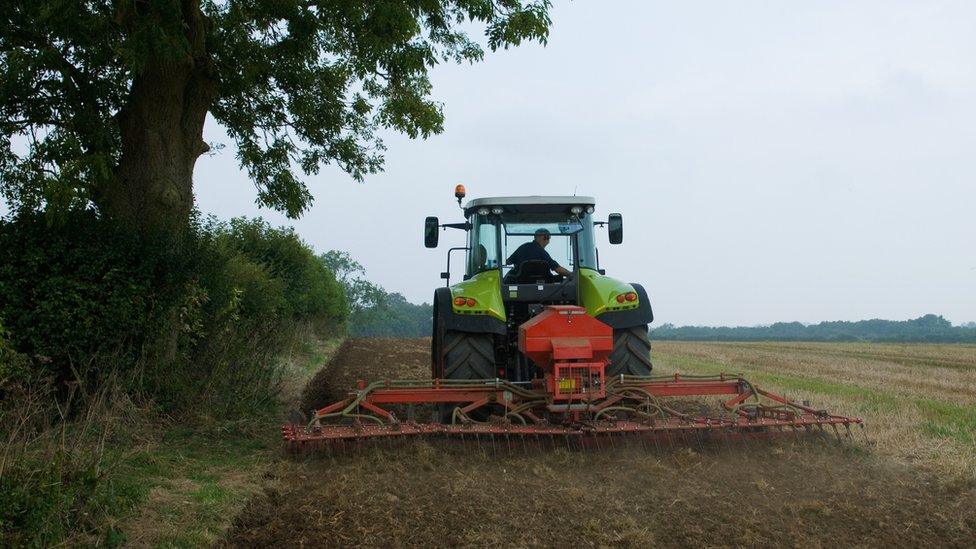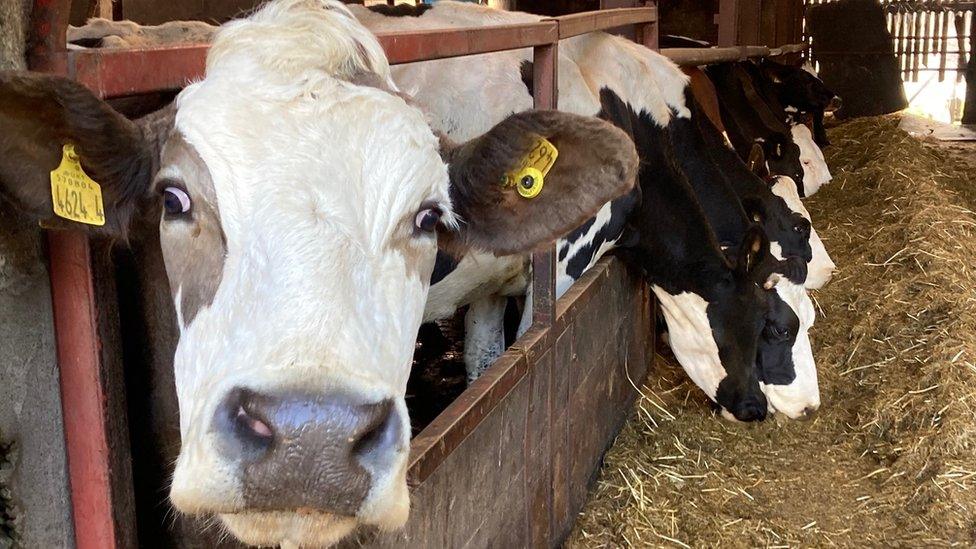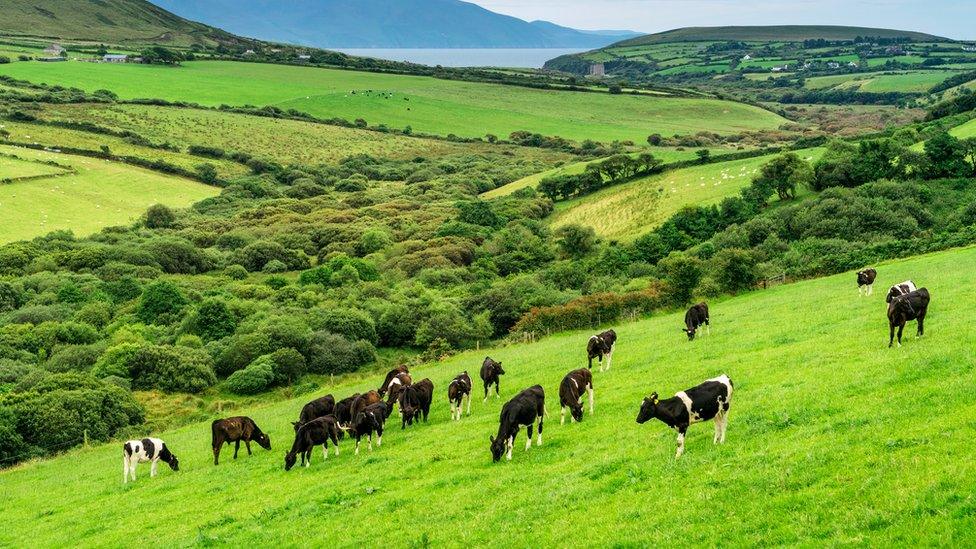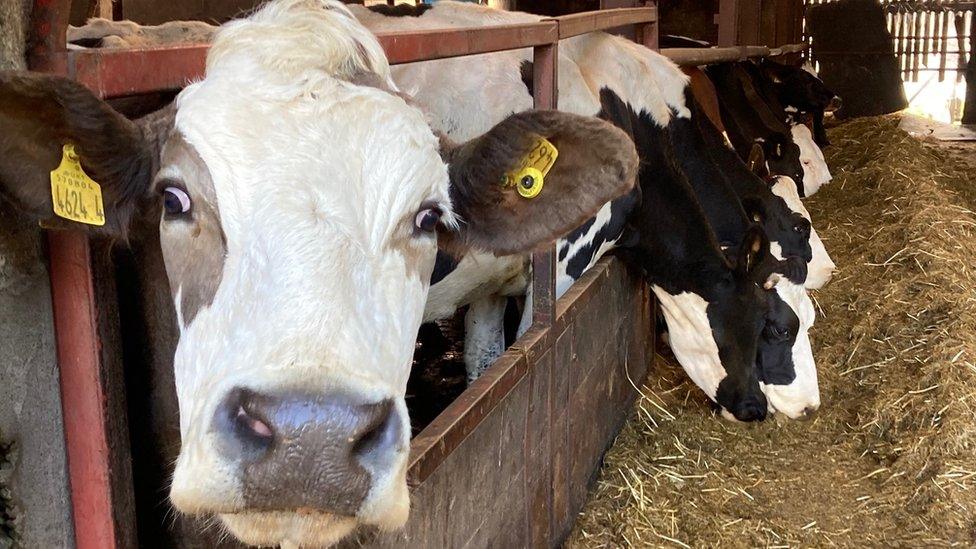More land being farmed in Northern Ireland, census shows
- Published

The total area being farmed is now 1,035,642 hectares, an increase of 1% on June 2020
More land is being farmed in Northern Ireland this year than last, and almost all types of farming have increased as well.
That is according to the provisional results of the Agricultural Census 2021, which covers from June 2020 to June 2021.
It is based on 16,600 responses to its survey.
There are approximately 25,000 farms in Northern Ireland.
The total area being farmed is now 1,035,642 hectares, an increase of 1% on June 2020.
More land is being used to grow crops.
Total cattle numbers have risen by 4%, to 1,681,991, with the majority of the increase in beef herds.
The number of pigs in Northern Ireland has also increased to 716,798, a rise of 5%.
There are just over two million sheep recorded in Northern Ireland, up 2%.

Cattle numbers have risen by 4% to 1,681,991
While poultry numbers on farms were mostly unchanged, the number of laying birds decreased by 13%.
Land in Northern Ireland is well-suited to growing grass to feed livestock, rather than arable farming of crops.
But in the year to June 2021, the amount of land used for crops increased by 2%.
Wheat crops had the greatest increase (8%), while there were also rises in cereals (4%), winter barley (2%), and spring barley (3%). Oat growth was static.

Analysis: Herd increases mean more methane emissions
While numbers may be dull on first glance, this census gives a snapshot of the scale of farming in Northern Ireland and its economic significance.
But from the outside looking in, some environmentalists may wonder where the priorities lie.
If more ruminants like cattle are being raised and herds increased, that means more methane being emitted.
Methane, while short-lived in the atmosphere, is a highly potent greenhouse gas that does more damage than carbon in the time before it breaks down.
On the other hand, work to try to tackle emissions from livestock is being invested in by farmers and by the broader industry - from soil and grass analysis to feed-to-yield systems.
With the focus of the world post-COP26 now on the environmental crisis being felt around the world, agriculture as an industry knows it has a challenge to rise to - but people will always need to eat.

Related topics
- Published25 August 2021

- Published2 November 2021
